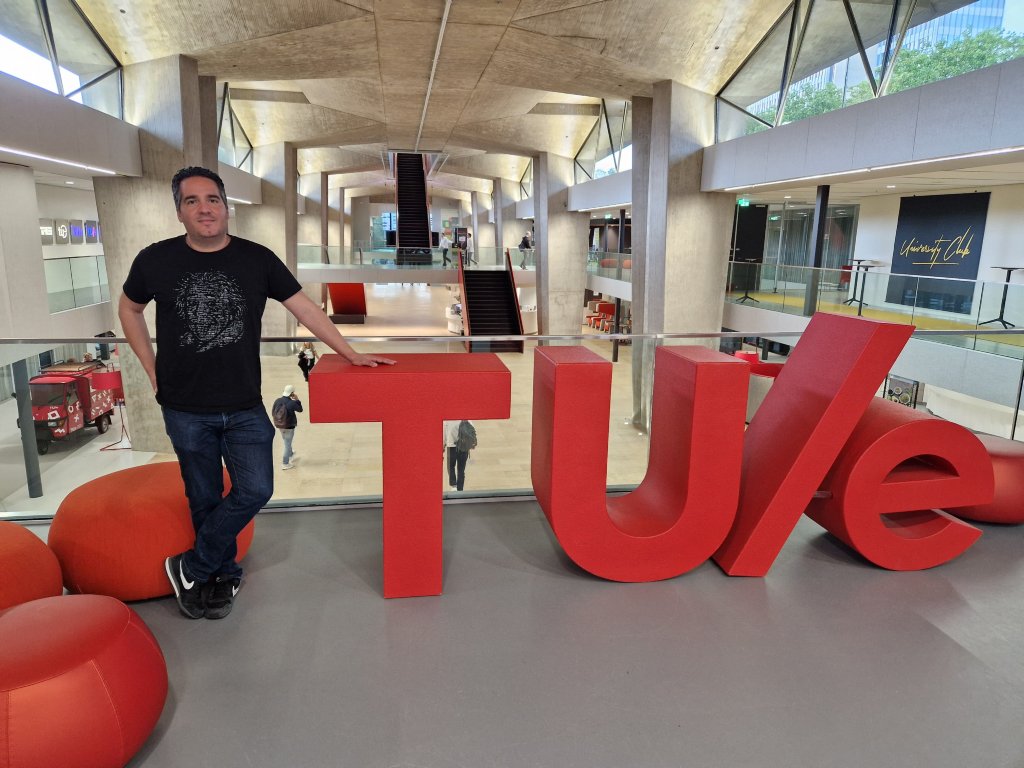Elderly's living standards improve with AI
A tailor-made voice assistant and a machine learning model are two examples of how AI can improve the elderly living standards in rural areas.

To many, it might come as a shock, but people in Europe and North America spend, on average, 90% of their time indoors. In older adults, most of this share is spent at home. As the population ages, how can we improve the quality of life for older people while taking good care of them? Yet again, AI can step in.
The Eindhoven Artificial Intelligence System Institute (EAISI) and 4TU.Built Environment recently co-organized a lunch meeting about health in the built environment. ‘AI in aging care anywhere: bringing technological advances to rural areas’ was the topic of a keynote given by visiting professor José Manuel García Alonso. The academic is an associate professor at the University of Extremadura (UEx), Spain.
A tailor-made voice assistant
Extremadura is one of the poorest regions in Spain and one of those that are depopulating faster. According to a recent study by the local institute of statistics IEEX, given current demographic trends, the region will lose 3.4% of its population in the coming 15 years. In contrast, the overall population of Spain would increase by over 10%. Not only is the region's population aging but it is also scattered, living in smaller villages. Hence, there is a need for innovation to effectively lend a helping hand.
Inspired by the work of researchers worldwide in gerontechnology—a research field combining the study of aging with technology—UEx researchers decided to work themselves on technologies to adapt to the Extremadura context. One example is ACHO, a voice assistant that reminds the user to take medicines and, when asked, recalls which ones have already been taken.
Tracking medication intake
ACHO has a wake-up word, asks and replies to questions, and can work offline– not all elderlies have an internet connection. “But users can also tell ACHO if there is any problem. For example, if they finished a medication, they might have to wait until the following week when one of their relatives brought them because there is no pharmacy in their village. This way, we track how a medication is being taken,” explains García Alonso.
Users' reactions differ. Although people voluntarily took part in the study, some stopped using it after a couple of days, while others enjoyed having conversations with ACHO. UEx filed a patent for the voice assistant, as it plans to grant intellectual property rights to a company that could commercialize the device. Besides, the researchers are working to improve the device by integrating suitable AI models.
Saving time, keeping quality
Many emerging healthcare technologies focus on bringing care services to the home—in a way, ACHO is also an example of this trend. Yet, many challenges remain for hospitals, the most overwhelming being the lack of personnel.
García Alonso is also part of a collaboration with Evora University and its nursing school. In one of the projects, UEx researchers created a machine learning-powered web application for nurses to collect information about older adults to monitor their body functions. Conventionally, nurses follow World Health Organization guidelines, prescribing to take several measurements requiring a lengthy procedure.
Nurses need to fill in questionnaires consisting of 31 questions. The scientists used machine learning to classify data and reduce the time needed to complete the questionnaires. As a result, they came up with two slimmer versions. The first cut 20% of the questions, scoring 99% accuracy. "Saving 20% of that time means having more free time to spend with the patients without losing accuracy,” underlines the professor. The second only kept 14 questions, reaching 96% accuracy. Although not as accurate, this version is suitable for home use.
Quantum computing is next
Much more can be done to help health professionals and guarantee high care standards for the elderly. Another research project García Alonso participated in explored the possibilities of quantum computing for personalized medicine.
“Most elderly people take multiple medicines. Whenever a new problem arises, and doctors need to prescribe a new medication, it is not only about understanding if such treatment works for the patient. In addition, it is key to see how that new care interacts with one’s body, genetics, and other medicines one is already taking. These are all complex variables that determine the requirement for high computing power, something quantum computers can offer,” he sums up.



